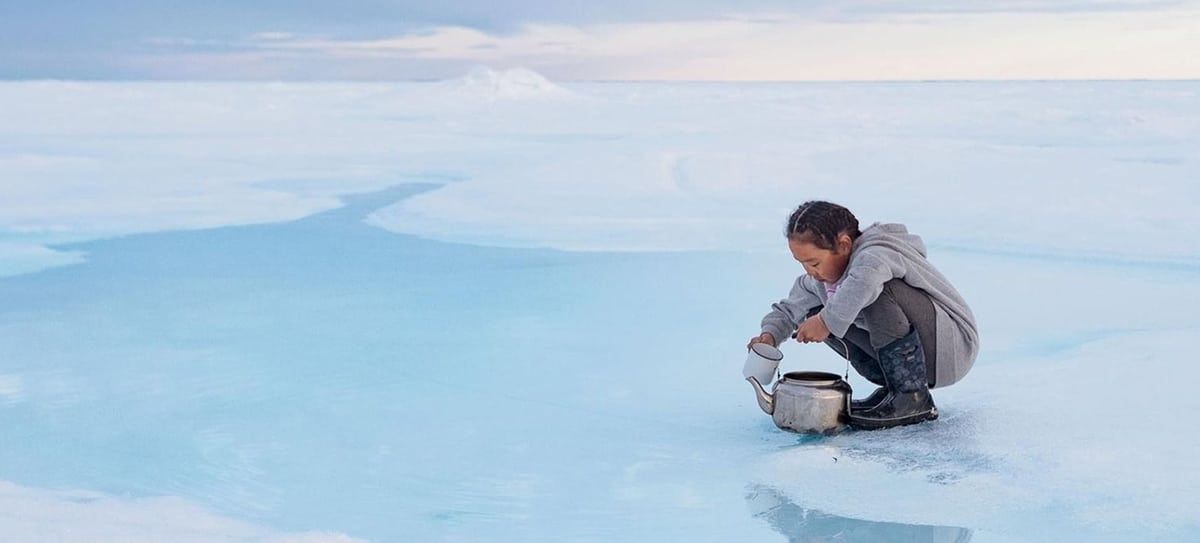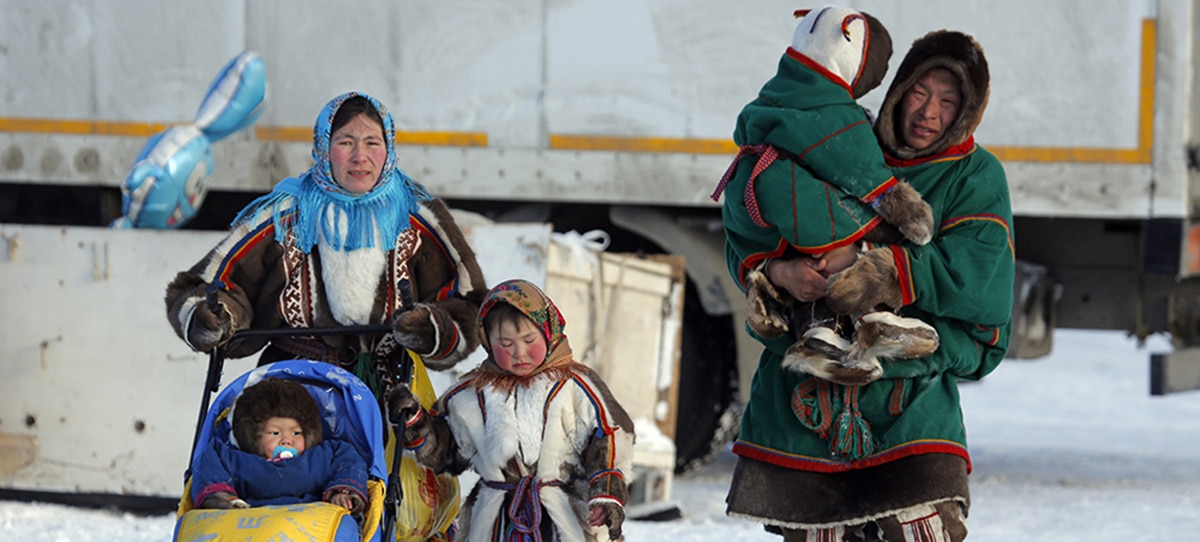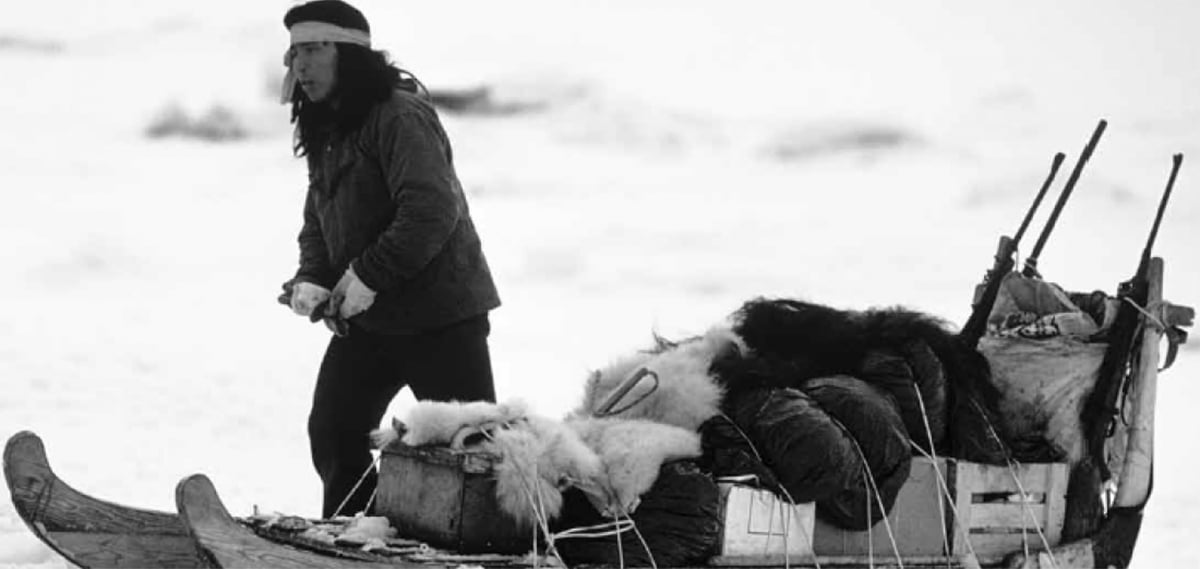
Somehow we all know who the Eskimos are. Will it be the books of our childhood, the school textbooks, the movies? I don't know, but we know who they are... or have we only heard about them but we don't know anything?
Possibly so, so today in Actualidad Viajes We are going to learn, among other things, who they are, what they are like and where do eskimos live.
eskimos

First you have to say that the name Eskimo actually it is a native name that refers to a geographic location, a group of people, or a dialect or language that is used internally, that is, to self-designate.
Having said that, when we talk about Eskimos we really talk about two groups of natives, the Inuit people and the Yupik people. The first is subdivided into a part of Alaska, another in Canada and another one in Greenland, and the second inhabits eastern Alaska and Siberia. There is indeed a third group that inhabits the Aleutian Islands, the Aleut, but are generally excluded from the "Eskimo" umbrella.

All three groups share a recent common ancestor and speak languages belonging to the same family. All they also inhabit the Arctic Circle and subarctic regions. There is no shortage of members of these groups who they consider that the word eskimo does not belong to them and even that it is somewhat pejorative.
For this reason, in Canada and the United States there have been and still are serious attempts to no longer use that term, at least in official documents. In fact, in Canada the word Inuit is used to talk about the original inhabitants of those lands. For your part The United States uses "Alaska Natives."
where do eskimos live

It is estimated that between the Inuit and Yupik peoples today there will be between 171 and 187 thousand people. The vast majority live in or near the circumpolar regions they have traditionally inhabited. Of this total, about 54 live in the United States, 65 in Canada, and about 52 in Greenland. Added to these numbers are just over 16 who live in Denmark, although they were born in Greenland, and some more who live in Siberia and, according to a non-governmental organization, the Inuit Circumpolar Council (ICC), are around 500.
The origin of why the word eskimo is considered pejorative sinks into the past. It seems that one of the meanings is "people who eat raw meat(one of the tribes called another group that, and that was the word that the European explorers ended up adopting). That is why, in 1971, the ICC decided to adopt the term Inuit to designate all the native peoples of the circumpolar region, beyond everything. They voted and replaced the word Eskimo with Inuit and although it was not fully accepted then, today in Canada Inuit is the word that is used.

But beyond any etymological or sociological discussion, what is known about these peoples? Well, genetic evidence has long shown that North America was populated by people from East Asia in several migratory waves.
While Native Americans are known to descend from a single early migration of Paleo-Indians, Alaskan peoples actually belong to different peoples who migrated to America a little later, keeping strong links with the people of Northeast Asia. The relationship between them and the remaining Native Americans is rather vague. We talked about migratory waves through the Chukchi Sea that occurred between 5 and 10 thousand years ago.

So, the Eskimos live in Alaska, Canada, Siberia and Greenland. The vast majority live in northern Canada, in remote areas. In the case of Canada, they inhabit the Inuit Nunangat, which includes Nunavut, Nunavik in northern Quebec, Nunatsiavut, which is in the north of the province of Labrador, and the Inuvialuit Settlement, which is in the Northwest Territories.
As of 2016 about 73% lived in 53 arctic communities located in Inuit Nunangat, "Inuit home"While 64% did so in Nunavut. Thus, roughly 72% of Canada's Inuit live outside of Inuit Nunangat, with two-fifths of them living in large urban centers. On the other hand, in Greenland, between 50 and 56 thousand of its residents are Inuit and that is equivalent to 89% of the population. Nothing little!
Nowadays, Inuit living in Canada have seen their housing conditions and access to health worsen, at least since the '50s, '60s, when they became sedentary. In the long run, this situation has turned them into a population group with more chances of suffering from risk diseases such as hypertension or cancer, diabetes or morbid obesity. Their traditional lifestyle has been modified due to, on the one hand, increasing urbanization and, on the other, campaigns for the rights of the animals that have traditionally been hunted.

And yes also climate change harms them, because there is no doubt that the changes resulting from the industrialization of the planet have harmed arctic environment. And that has negative consequences on the lifestyle of the Eskimos, changing, for example, drastically, their diet. Warmer temperatures have melted ice, reduced snow and permafrost and thus your world has begun to disfigure, hunting seasons are no longer as long, plus hunting on thinner ice is more dangerous...
La contaminationIt has even caused that what the Eskimos consume also has its risks. Why? Have been found traces of heavy metals in some arctic animals, for instance. Thus, when you add everything up you have that the lifestyle of these people has changed a lot, continues to change and is in danger of extinction, wherever they live.
Today, there are movements to preserve Eskimo culture. In Canada, an organization called Inuit Tapiriit Kanatami has been formed to fight for the rights of these communities, and the UN has begun to monitor environmental conditions in the Arctic. If we frame this in the fight to stop climate change and the recognition of indigenous peoples and their rights, here and throughout the world, hopefully a good future will open up to this ancient people.